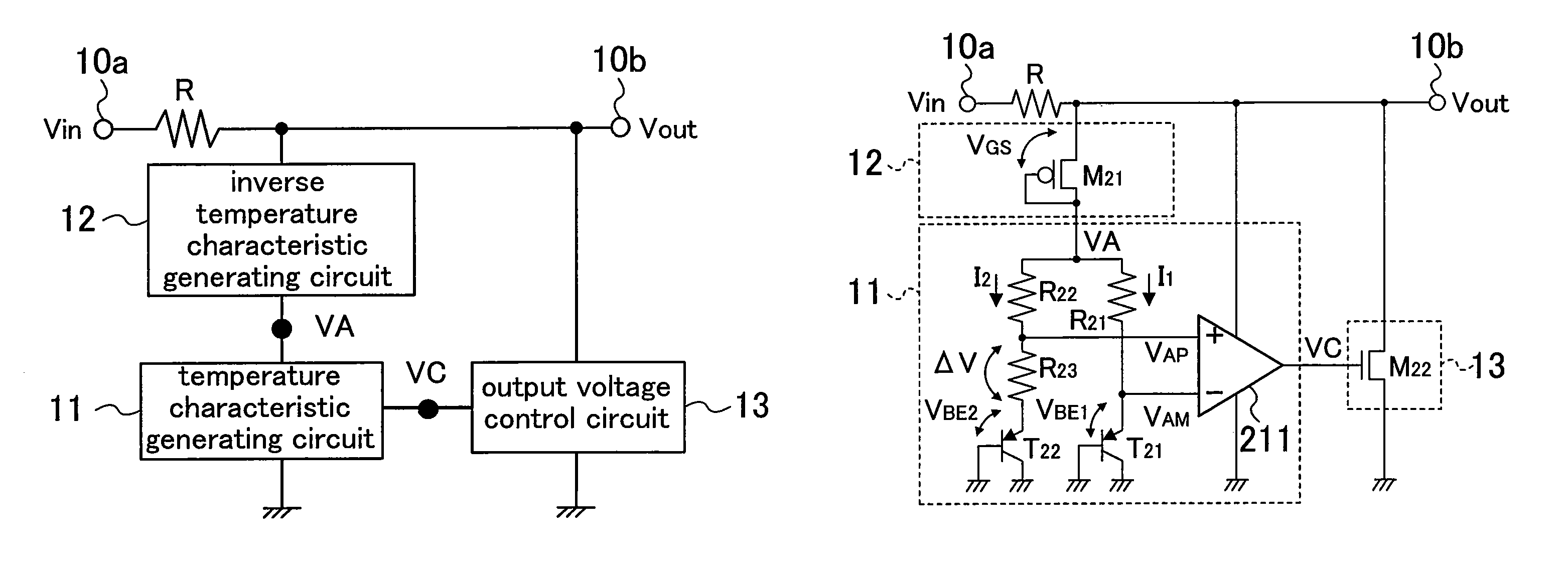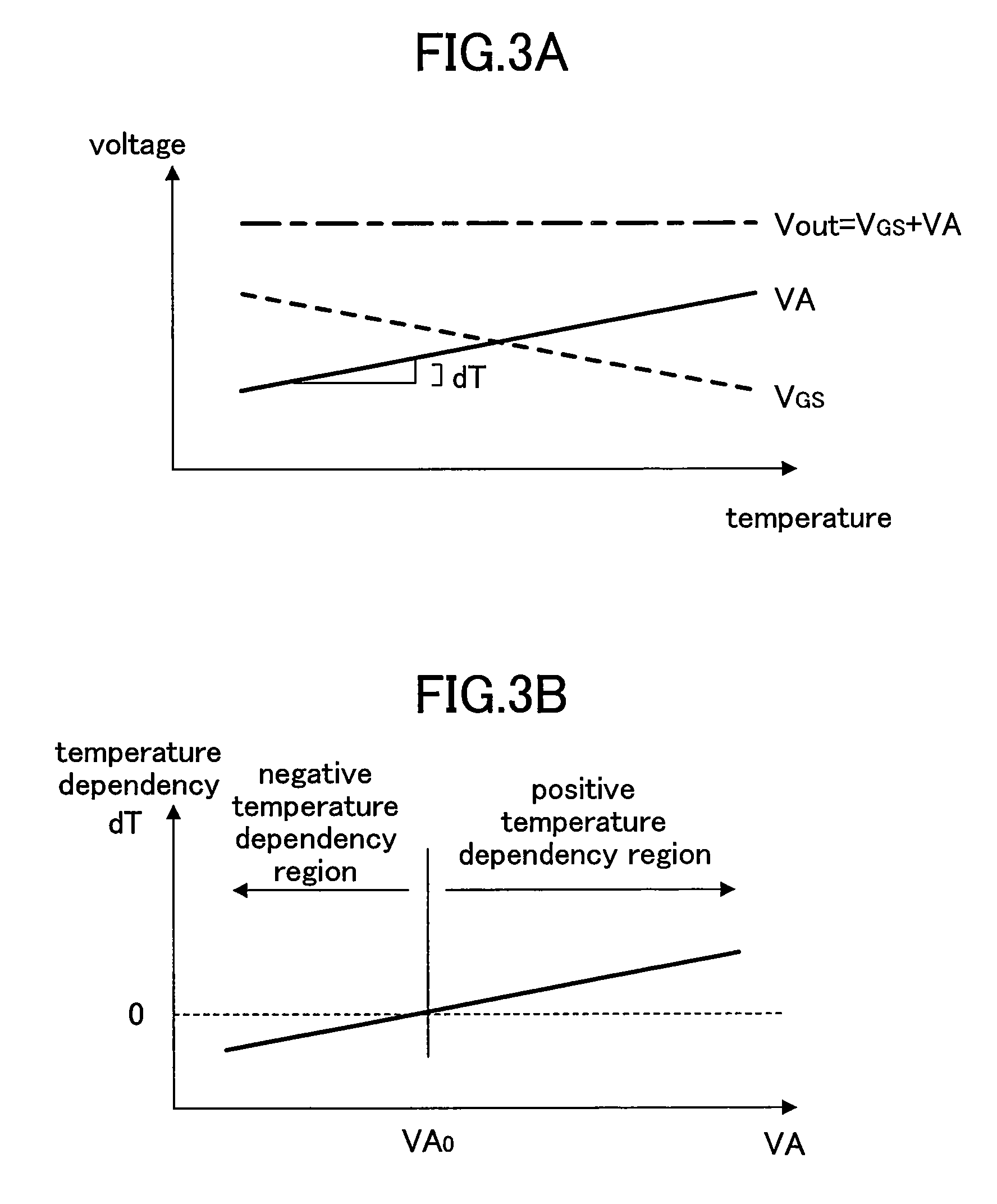Constant voltage circuit
a constant voltage, circuit technology, applied in the direction of electric variable regulation, process and machine control, instruments, etc., can solve the problems of difficult design of low current consumption, inability to freely set voltage value, and non-negligible influence on manufacturing cost, etc., to achieve low current consumption, small circuit scale, and easy design
- Summary
- Abstract
- Description
- Claims
- Application Information
AI Technical Summary
Benefits of technology
Problems solved by technology
Method used
Image
Examples
first embodiment
[0027]FIG. 1 is a block diagram showing a configuration of a constant voltage circuit according to a first embodiment of the present invention. The constant voltage circuit of FIG. 1 receives an input voltage Vin at an input terminal 10a, and outputs a constant voltage Vout from an output terminal 10b. The input terminal 10a and the output terminal 10b are connected to each other via a resistance R. A series circuit of a temperature characteristic generating circuit 11 and an inverse temperature characteristic generating circuit 12, and an output voltage control circuit 13 are each connected between the output terminal 10b and a ground. A voltage output end of the inverse temperature characteristic generating circuit 12 is connected to a voltage input end of the temperature characteristic generating circuit 11 at a terminal VA. The constant voltage Vout is input as a power supply voltage to the output voltage control circuit 13.
[0028]The inverse temperature characteristic generating...
second embodiment
[0061]FIG. 7 is a block diagram showing a configuration of a constant voltage circuit according to a second embodiment of the present invention. The constant voltage circuit of FIG. 7 outputs a constant voltage VR from an output terminal 30. A series circuit of a temperature characteristic generating circuit 31 and an inverse temperature characteristic generating circuit 32 is connected between the output terminal 30 and a ground. A voltage output end of the inverse temperature characteristic generating circuit 32 is connected to a voltage input end of the temperature characteristic generating circuit 31 at a terminal VA.
[0062]The inverse temperature characteristic generating circuit 32 generates a potential difference (VR−VA) between the constant voltage VR and a voltage VA, decreases the constant voltage VR by the voltage (VR−VA), and supplies the voltage VA via the voltage output end to the temperature characteristic generating circuit 31. The temperature characteristic generatin...
PUM
 Login to View More
Login to View More Abstract
Description
Claims
Application Information
 Login to View More
Login to View More - R&D
- Intellectual Property
- Life Sciences
- Materials
- Tech Scout
- Unparalleled Data Quality
- Higher Quality Content
- 60% Fewer Hallucinations
Browse by: Latest US Patents, China's latest patents, Technical Efficacy Thesaurus, Application Domain, Technology Topic, Popular Technical Reports.
© 2025 PatSnap. All rights reserved.Legal|Privacy policy|Modern Slavery Act Transparency Statement|Sitemap|About US| Contact US: help@patsnap.com



